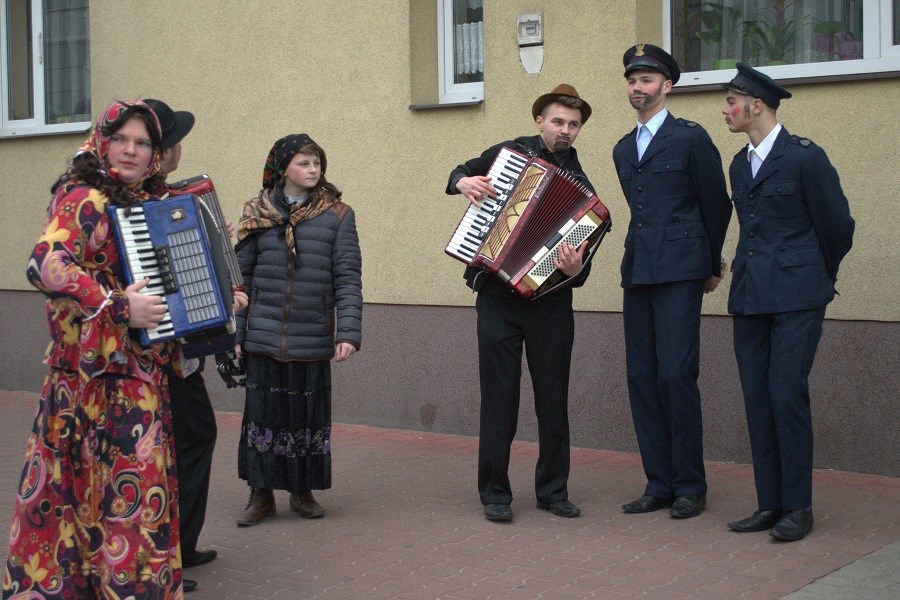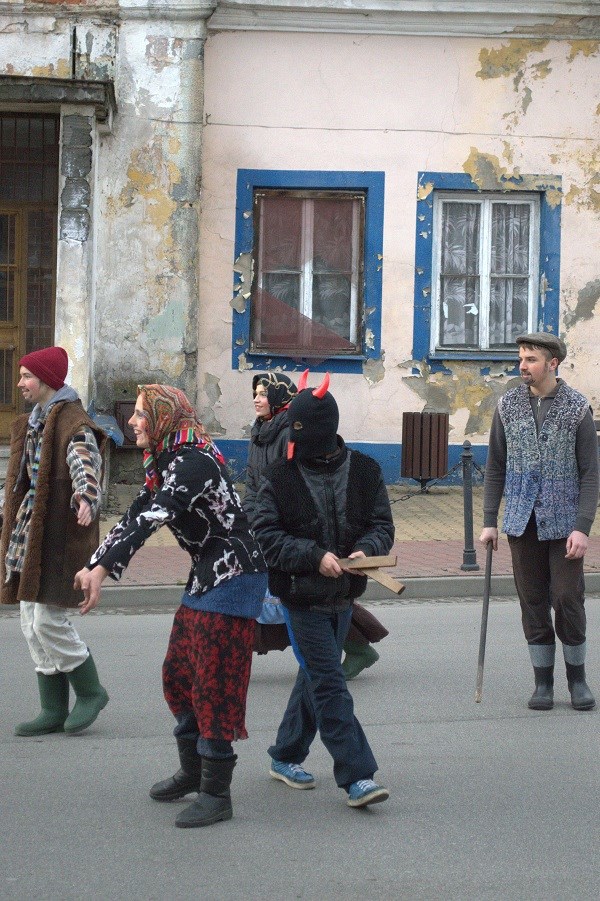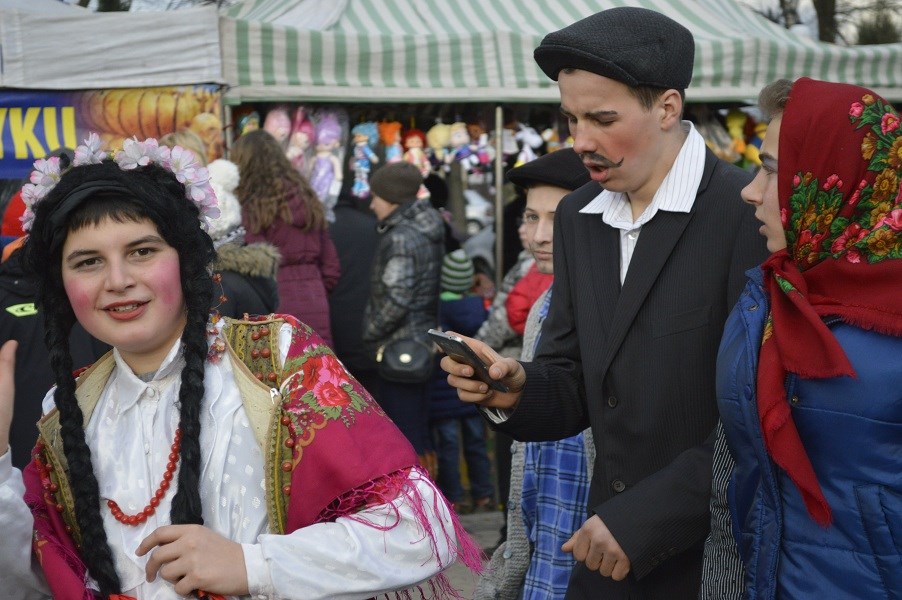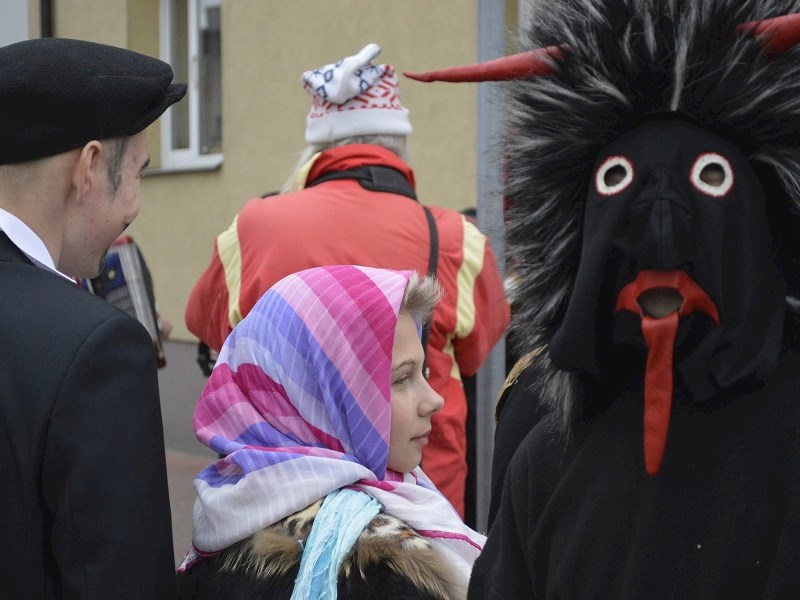This performance is based on a legend written in verse in the 1830s, although the origins of this ritual probably date back to the 16th or 17th century. According to its plot, which has been repeated in an unchanged form for centuries, the inhabitants of Jedlińsk capture drunken Death, taking advantage of the fact that he lost his fatal scythe. The skeleton is put before judges, who pass the harshest possible sentence. Then an executioner is summoned to carry out the penalty of beheading in front of the audience. “The Beheading of Death” is an annual Carnival ritual celebrated in Jedlińsk. It takes places on the last Tuesday of the Carnival, called ‘kusok’ (or ‘kusak’, plural: ‘kusaki’) and symbolically marks the border between the end of the Carnival and the approaching Lent.
„The Beheading of Death” is one of the few Carnival rituals still practiced today. Out of those that have survived till now, it is closest to a theatrical performance. Every year, already from the morning, it attracts a large audience when groups of coloured masqueraders go out to the streets of Jedlińsk, most of whom are disguised as devils. Only men take part in the performance, playing the roles of Death, Executioner, Administrator, Judges, Angel, etc. They also impersonate female roles. The tradition of participation in this ritual is passed down from father to son, which is a source of pride in Jedlińsk. After the execution of the sentence, the symbolic corpse of Death is carried on a sledge around the village and eventually handed over to the mayor, whose task is to prepare a certificate of death.
According to the former ritual year, the Carnival was followed by the period of Lent, which prepared human body and soul for Easter. Such was also the function of ‘kusaki’, which turned the order of the world upside down for a while to make room for the upcoming time of reflection and moderation. Although the Angel warns that death will continue to reap its harvest, the ritual traditionally ends in a revelry – after all, it is still the last day of the Carnival. In the inn where the funeral of Death is held, Carnival dances last till midnight. The Carnival ritual from Jedliński is commented upon in the local press and is also described in research works as an example of a custom that is still alive and willingly cultivated.











